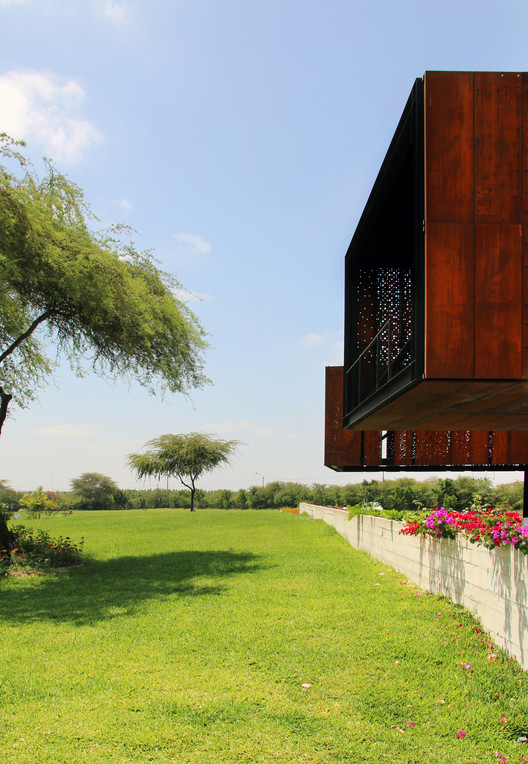
-
Architects: Cheng Franco Arquitectos
- Area: 972 m²
- Year: 2017
-
Photographs:Jorge Cheng
-
Manufacturers: Vibia, Caesar VERSE, Hunter Douglas

Text description provided by the architects. The project is a 972m2 house, located within a private 24 acres site, outside the city, in the coastal region of Piura, north of Peru. It is surrounded by non-occupied sites and it is approximately 6km off the main road.The site is currently used as a hatchery for horses, the Peruvian Horse, a breed of light pleasure saddle horse known for its smooth ride. There are approximately 50 horses on Site. The brief asked for a holiday type house with minimum 4 bedrooms, large social areas, a wine cellar and a room to hold horse competitions trophies.
























